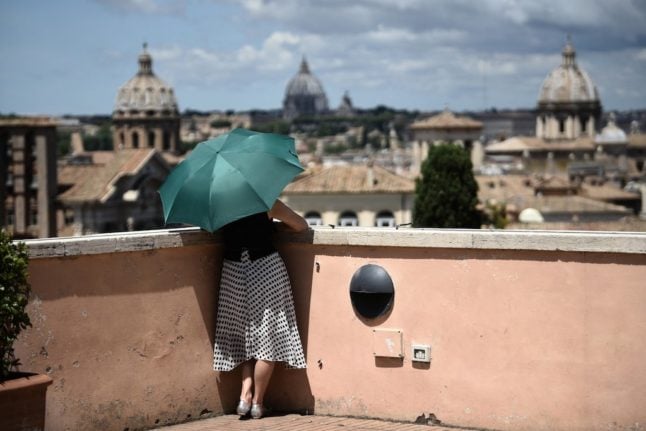It can be quite confusing for Americans who want to move to Italy as there are a number of different visa options available and a whole raft of requirements in order to be eligible for them.
US nationals don’t have the automatic right to get a job in Italy or anywhere else in the EU because of their status as third-country nationals within Europe’s single market, but thankfully some visas will allow you to work here.
Elective residency visa
The elective residency visa, or ERV, is designed for those who want to live in Italy and have the financial means to support themselves without working. Because you can’t work while on the ERV, it’s sometimes referred to as a retirement visa.
You’ll need to prove you receive an annual passive income of at least €31,000 euros per person or €38,000 for married couples, plus five percent per dependent minor, though some consulates require more.
READ ALSO: Five expert tips for getting your Italian elective residency visa approved
This can be rental income, a pension, annuities, or some other source, but simply having significant savings in the bank doesn’t count: it has to be in the form of a fixed and reliable passive income stream.
Find out more about applying for an Italian elective residency visa.
Family visa
The family visa is available to US dependents of either an Italian citizen or a US citizen with an Italian stay permit. It allows entrance in Italy to the spouse, children or dependent parents.
You will need to provide evidence of your relationship with the person whose dependent you will be, for instance marriage or birth certificates.
Find out more about applying for an Italian family visa.
Employee work permit
This option has the obvious drawback that you need to have received and accepted an offer of a job in Italy in order to be eligible.
The good news is that your employer will then complete most of the visa application process for you – all you need to do is provide them with the relevant paperwork.
Your employer will apply for permission to hire a migrant worker from the immigration desk at their local prefettura (prefecture, the regional office of the central government). Once you get authorisation, the prefettura will inform the Italian consulate or embassy in your home country that your application can go ahead.
Student visa
To apply for a long-stay (type D) student visa, you’ll need to be accepted onto a course that lasts longer than three months.
When applying you should provide a letter of acceptance to your course in Italy, as well as proof of accommodation, sufficient financial means and health insurance.
There is no age limit, and the visa allows you to work up to 20 hours per week and bring family members to live with you.
Find out more about applying for an Italian student visa.

Golden visa
Italy does not technically offer a golden visa, but this is how its investor visa is often referred to. This scheme allows non-EU citizens such as Americans the right to live in Italy if they meet the key requirements, namely a minimum investment of €250,000 to €2 million in certain companies, charities or government bonds.
This visa entitles you two years’ residency, renewable for further three-year periods, and special tax benefits. Investors’ families are eligible to apply for dependent visas.
READ ALSO: Does Italy have a golden visa?
To obtain a visa, US investors must obtain a nulla osta (certificate of no impediment) issued by the Investors Committee for Italy (IV4I); you then have six months from its issuance to make the application for an investor visa.
Other visas
The above visas are the main ones suited to Americans looking to move to Italy longer-term, though there are a number of other visas available, including the internship visa, the startup visa, and the self-employed visa.
These visas all have stringent requirements that make them challenging to obtain.
To successfully apply for the internship visa, you must have been offered a paid vocational training course of between three and 12 months by a host organisation that will commit to paying your food and board and funding your repatriation in case of an emergency.
The self-employed visa might sound like an ideal solution if your job allows you to work from anywhere, and is currently the closest thing Italy has to a digital nomad visa.
In reality, however, experts have told us that successful applications for these visas are extremely rare, so it isn’t an option for most people.
The startup visa requires you to apply through a startup that is headquartered in Italy and less than four years old, and has a team composed of one third PhD students or two thirds MA students, or holds a patent, industrial property right or original software registered with the Italian Society of Authors and Publishers (SIAE).
On arrival
Remember that your visa isn’t the only permission you’ll need if you want to live in Italy.
After you enter Italy with a long-stay visa, you have eight days to apply for a residence permit (permesso di soggiorno). The length of time this document will remain valid depends on the type of visa you have.
You’ll also need to apply for a tax code and register as resident with your local comune, or town hall.
Find out more about what you’ll need to do once you land in Italy here.
Please note The Local is unable to advise on individual cases. For more information on whether you are eligible to apply for a visa, contact the Italian consulate in your country or consult an immigration law specialist.
Read out more about applying for a visa in our Italian visa section.




 Please whitelist us to continue reading.
Please whitelist us to continue reading.
What are the “special tax benefits” referred to for the Investor Visa?